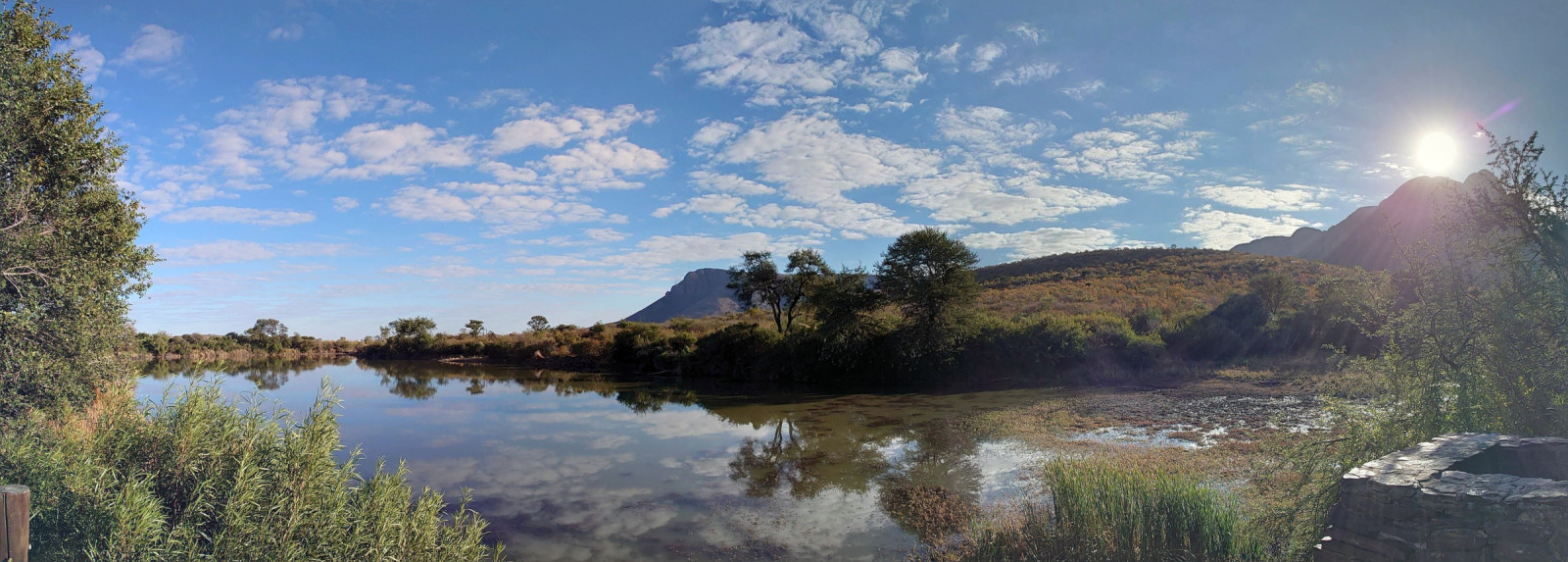Charger images
Les formats d'image autorisés sont de type jpeg, png ou gif
La taille maximale du fichier doit être de 20MB

As you enjoy the mountainous landscape, Cape Vulture fly over your head in large waves. The area is known as the second largest colony of Cape Vultures.
Marakele National Park is set in the heart of the Waterberg Mountains in the scenic Limpopo Province, South Africa. Guests can see 4 of the Big Five, abundant birdlife and flora. The Tswana name Marakele or 'place of sanctuary' is a fitting name for this South Africa National Park where guests can enjoy game drives and walks whilst exploring majestic mountain landscapes, grass-clad hills and deep valleys.
Located in the transitional zone between the dry western and moister eastern regions of South Africa, Marakele National Park is a birding haven where visitors can see closely related species alongside one another such as Southern Boubou and Crimson-breasted Gonolek. Perhaps the biggest attraction is the largest colony of Cape Vulture in the world (around 800 breeding pairs).
Marakele is also an excellent place to look for raptors, with many species using the updraft generated off the cliff faces of the Waterberg Mountains to ride thermals. Other species to look out for are African Harrier-Hawk, Jackal Buzzard, Black Goshawk and several eagle species including Verreaux's Eagle and African Hawk-Eagle. A future development will allow visitors access to the many iron-age sites in the park.
This Limpopo Nature Reserve in South Africa is home to Elephant, Black and White Rhino, Lion, Leopard and Brown Hyena. Resident antelope include Sable, Kudu, Eland, Impala, Waterbuck and Tsessebe. Chacma Baboon and Vervet Monkey are two species to be watched carefully for mischief, especially around the rest camps. Nature lovers can also discover the incredible variety of indigenous and rare flora in Marakele National Park.
Marakele National Park is about 3 hours drive north of Johannesburg. North of the reception complex and camping site can be traversed in a normal sedan, as can the entrance roads to the safari tent camp and bush camp. The narrow track up to the massif is also accessible to sedan cars. Most other roads will present difficult terrain and are suitable for 4x4 vehicles.
No driving at night is allowed in the park. Visitors are not allowed to get out of their vehicles except at places indicated on the map by the park receptionist. A general speed limit of 30 km per hour (19 miles) must be maintained within the park boundaries and no off-road driving is permitted.
Summers in the Waterberg region are hot but the area does not suffer from the stifling humidity typical of the eastern Lowveld.
To stay in the National Park, you have two choices: Bontle Rest Camp and Tlopi Tented Camp. I can recommend Tlopi Tented Camp for birdwatchers. In the morning, you will be treated to the presence of African Jacana, Black Crake, Village Weaver, Chinspot Batis, African Fish-eagle, etc. You may also be lucky enough to spot a group of Hyenas or an African Civet in the morning.
Bring supplies with you, since there is no shop in the park. Thabazimbi town has a shopping mall (Thaba Mall) and a lot of other shops were you can get food and essentials.
Votre feedback sera transmis à l’auteur.rice de cette zone et à l’équipe éditoriale de Birdingplaces, qui l’utiliseront pour améliorer la qualité des informations. (Vous souhaitez publier un commentaire visible en bas de page ? Fermez cette fenêtre et choisissez l’Option 1 : « Publier un commentaire, un conseil ou une observation ».)
Veuillez fournir des suggestions d'améliorations ou d'ajouts au texte de ce site ornithologique.
Veuillez fournir vos suggestions d'améliorations ou d'ajouts à la carte.
Veuillez fournir des suggestions d'améliorations ou d'ajouts à la liste des oiseaux.
Cliquez sur l'icône de l'oiseau () Insérez les noms d'oiseau dans votre langue. Ils seront automatiquement traduits pour les autres usagers !